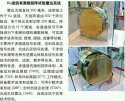T/R Module Packages don't tell the whole story but they seem to indicate to me a general idea on the level of advancement the particular radar set has reached. Comparing AESA radar between aircraft based on T/R Module counts should also be in the context of internal volume per each aircraft's nose cone, because it varies.
Agree. In fact poster inst discussed this at length in some of the earlier messages.
I have a question for anyone in the know on this subject. Is the output power also largely a component of the radar architecture in addition to T/R module density? I tend to imagine it being something along the lines of GPU's, where differences between design architecture (even on the same process node ex. 28nm) can mean differences in energy efficiency and power output between sets. If that were the case it would be impossible to do a 1 to 1 comparison between two AESA of the same rough volume and module density, without the actual manufacturer specs.
T/R power output both in terms of peak and average to my knowledge represent a sum of many technologies which collectively and their incremental advances over the last 15-20 years got to where it is today. For example, it is said that the Russians with their tech is only able to extract 5 W peak power with present know how. The US has advanced to the 15-20 W range. It is speculated that the T/R modules on the PAKFA might output around 10-12 W peak power. A number of things affects this power output, including quality of T/R, packaging technology, cooling capacity, technology of integrated circuits, architectural design affecting transmit and receive losses, and general efficiency.
Regarding objective comparison, given that peak power of radar is a function of peak power of T/R modules multiply by number of T/R modules, knowing both variables does give us a sense of where each claims stand relative to others.

